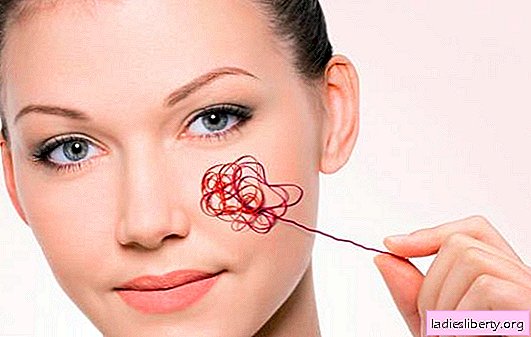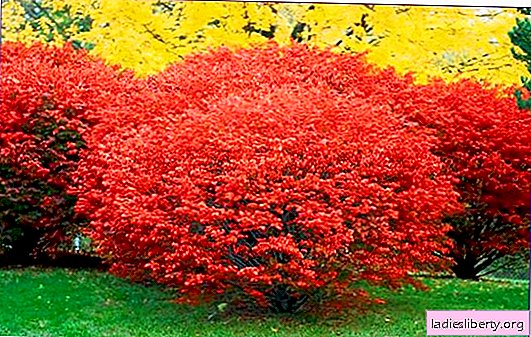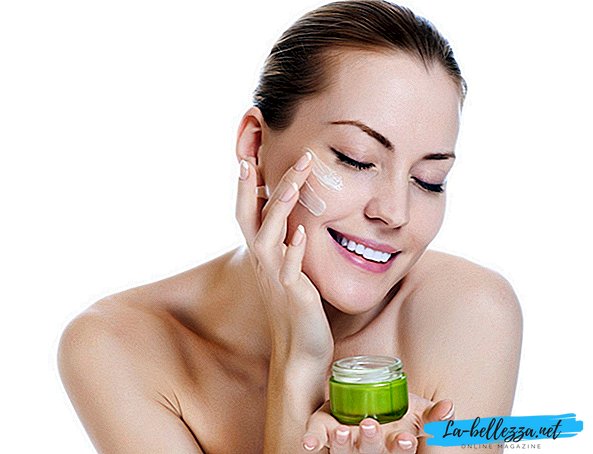
Blush all over the cheek - looking at such a person, it seems that he is full of health and does not experience any problems. But it's not always the case. Very often, facial flushing is a sign of a pathological condition that is associated with a violation of the blood microcirculation.
Couperosis on the face is a rather serious condition in which the elasticity of capillaries changes, they expand, local microcirculation and skin nutrition are disturbed. Most often this happens on the face. A vascular pattern appears in the form of a network, spider veins, telangiectasias. This is due to the fact that the walls of the capillaries become brittle and brittle.
Interestingly: Until recently, couperosis on the face was considered an independent disease that had to be treated from the moment of diagnosis, like all diseases. But, as recent studies have shown, it turned out that rosacea is one of the stages in the development of such a serious illness as rosacea. Rosacea - Acne rosacea. Its development includes several stages. The onset of the disease is associated with sudden changes in temperature. At a certain stage of development, there is a violation of blood circulation in certain areas. Since the temperature difference affects, first of all, the exposed areas of the body, the disease also appears in these places - the face suffers immediately. The skin turns red, becomes covered with spider veins or the vascular network. It was this stage in the development of rosacea that was called rosacea. In the future, with rosacea, rashes such as nodules can occur. If adequate treatment is not started, the disease develops further and proceeds to the third stage, at which inflammation of the rashes and damage to the remaining areas of the skin occur.
Couperosis on the face - causes
So, rosacea occurs as a result of circulatory disorders in the surface layers of the skin. As a result of these violations, there is an increased load on brittle and brittle capillaries that have already lost their elasticity.
The factors that cause couperosis on the face are many:
- genetic predisposition;
- light skin;
- high sensitivity of the skin.
The appearance of rosacea on the face can be caused by some other reasons.
The main ones are:
1) hormonal background - its changes are one of the most common causes of rosacea. In connection with fluctuations in the hormonal background may:
- weight change (while regardless of nutrition and physical activity);
- sharply increase blood pressure (a decrease in pressure leads to a decrease in the vascular network),
- mood changes (with depression and stress, spasm of blood vessels and increased pressure in them);
- colds, sinusitis,
2) varicose veins;
3) pathology of the digestive system;
4) all kinds of allergies.
These are just a few of the most common causes of rosacea on the face.
But there are many more factors that provoke the occurrence of rosacea, are the trigger.
The most common:
- sudden changes in temperature - these include contrasting washing, showering and showering, leaving the heated room in the cold, rubbing the face skin with ice cubes. This exposure factor often leads to isolated nose rosacea, as the nose reacts faster and stronger than other parts of the face to the temperature difference.
- bad habits: alcohol, smoking and overeating. The absorption of alcohol into the blood occurs quickly in connection with the structure of the alcohol molecule and its high penetrating ability. molecules enter the vessels of the face, initially causing their spasm, and then their further expansion. As a result, the destruction of capillaries occurs.
- taste preferences - spicy, fried, smoked, fatty foods; coffee, chocolate, sweets in large quantities
- a tan,
- old age: in the elderly, all biochemical processes slow down, including blood circulation and metabolism.
Couperosis on the face - symptoms
Under the influence of many external factors leading to disruption of microcirculation, blood stagnates in the capillaries. There is a deficiency of oxygen and nutrients in the cells, decay products accumulate. Cell division and renewal slows down, the skin is not renewed. As a result, the skin is dry, peeling, a visible capillary network appears on it.
Objectively, this is manifested in the pallor of the skin with a grayish tint. The skin loses a healthy natural color and quickly ages. Single redness that occurs in the initial stage on the face becomes further persistent, merged red against a background of dry and dull skin.
In the future, the vasculature and telangiectasias (expansion of small vessels in the form of stars) appear, their number increases. These changes are due to changes in the diameter and elasticity of the blood vessel wall at this stage.
Subjectively, a person experiences discomfort, burning, discomfort, tingling, itching of the skin with minimal drops in air temperature, washing or touching.
The problem of rosacea on the face is more often encountered by women. People with dark skin suffer much less often than fair-skinned.
Couperosis on the face - treatment
Treatment of rosacea on the face is required. If this condition is left to chance, its progression will lead to the last stage of development - the appearance of pustular rashes, which will begin to actively spread to healthy areas of the skin. In this case, it will take more effort, money and time to recover. And, most importantly, it will bring a lot of emotions, stress and cause trauma due to an unaesthetic appearance, which again will cause additional difficulties in the treatment of rosacea on the face and a new round of the disease.
Therefore, adequate treatment should be started immediately, as soon as signs of rosacea began to appear in the form of hyperemia, dull skin, a vascular pattern on the face.
1) Medicines that are prescribed at this stage: troxevasin, heparin ointment, calendula ointment.
2) The treatment should be comprehensive, so vitamins (PP, E, C, K), antioxidants, drugs that help reduce vascular wall permeability, polyunsaturated fatty acids should be included in the treatment plan.
3) There are "salon" methods of correction of rosacea:
electrocoagulation;
- laser therapy;
- ozone therapy;
- photorejuvenation.
4) Careful gentle care is applied with special products for sensitive skin.
5) The use of sunscreens.
6) In winter - the use of a nourishing cream of dense consistency.
7) Diet - this item, perhaps, deserves the very first place in connection with its importance. Exclude spicy, fried, salty, pickled and eat foods with a high content of ascorbic acid: sauerkraut; a variety of citrus fruits; Red pepper; rosehip; black and red currants; green tea.
Electrocoagulation - This is the most affordable and fastest method for removing spider veins. The procedure consists in the fact that the thinnest needle is fed to the vessel, through which an electric current is passed. As a result, the destruction of the affected vessel occurs.
For the treatment of rosacea on the face, there are special creams and ointments. Normal cosmetics should not be used., It does not fit. For example, Bioderma Sensibio is a product of the Russian bioderma laboratory. This cream is very effective in the treatment of rosacea and other skin diseases. The active component - Rosactiv - acts on the capillaries of the epidermis and reliably protects from the harmful effects of destructive environmental factors.
Dr. Taffi - vegetable ointment, which includes calendula oil. Due to its mild relaxing effect, it is used even in the treatment of rosacea in children.
Since rosacea leads to dehydration of the skin, a prerequisite for successful treatment is gentle cleansing and moisturizing. Therefore, it is better to use cosmetic cream and milk that cleanse, nourish and moisturize the skin. And in no case do not use soap. It destroys the fatty film that protects the skin from moisture loss.
Hot and very cold water, contrast showers, stay in the sauna are contraindicated.
Therefore, the main rule that must be observed from the very beginning of treatment: without good skin care, it is difficult to achieve the desired result. All therapeutic measures for rosacea should be preceded by the creation of conditions to protect the affected areas from the effects of aggressive (irritating and food) factors and bad habits. In this case, treatment of rosacea will be successful.











